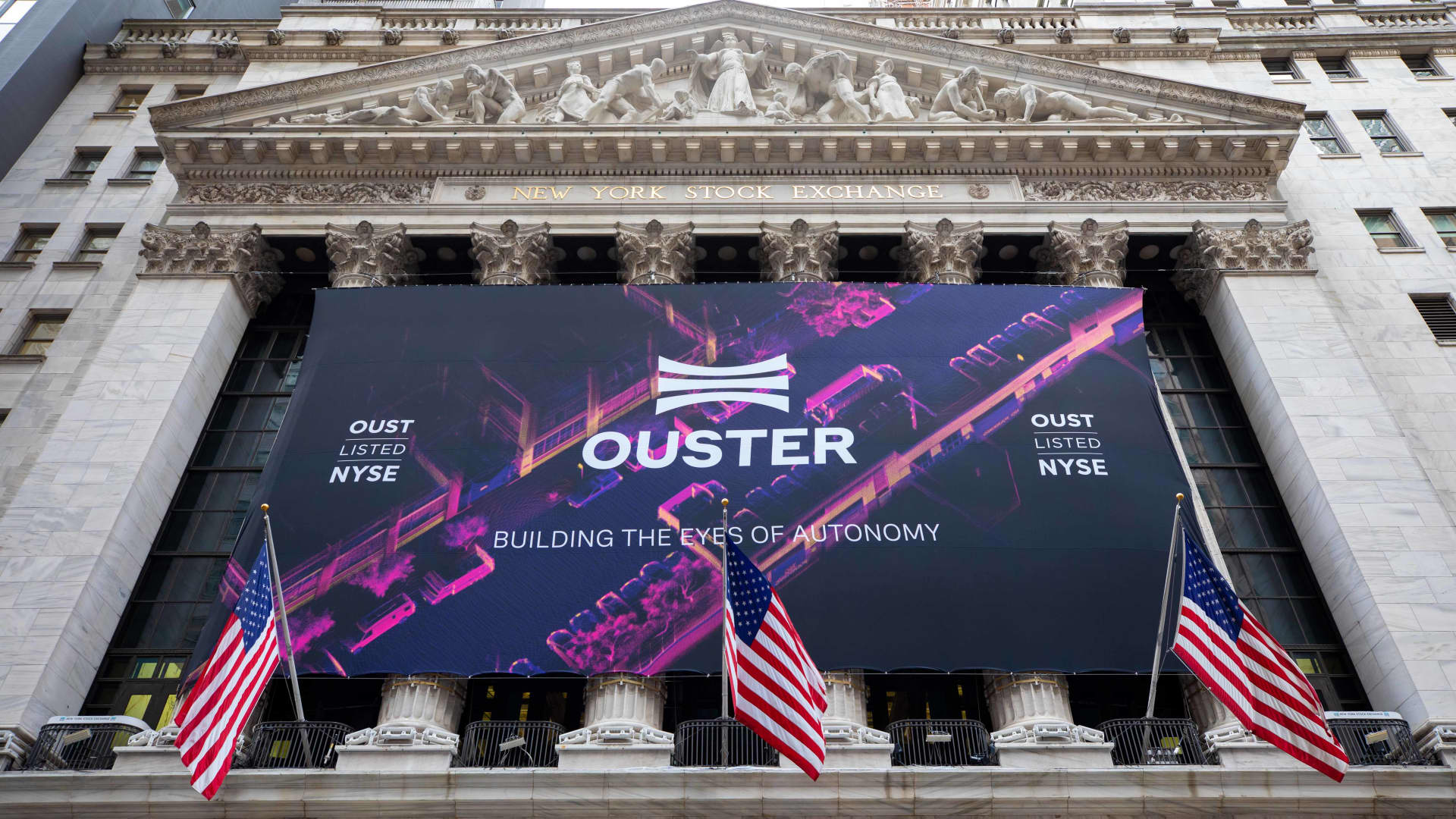Products You May Like
Lidar makers Ouster and Velodyne have agreed to merge, combining roughly $400 million in market value.
The companies said on Monday that they will join forces to increase their competitiveness in a market segment that has seen valuations plummet as investors have grown disillusioned with autonomous-vehicle technology.
Lidar, short for “light detection and ranging,” is a sensor technology that uses invisible lasers to create a highly detailed 3-D map of the sensor’s surroundings. Lidar sensors are considered important components of nearly all autonomous-vehicle systems currently under development, and are finding increasing applications with advanced driver-assist systems as well as other areas of robotics.
Intense investor interest in the potential of self-driving vehicles led many lidar startups to go public over the last few years. But valuations are now a fraction of what they were two years ago, and prominent automakers including Ford Motor and Volkswagen have trimmed investments in autonomy in favor of more limited driver-assist systems.
Under the deal, signed on Friday, Velodyne shareholders will receive 0.8204 shares of Ouster for each Velodyne share they hold – a premium of about 7.8% based on Friday’s closing prices for the two companies’ stocks.
Ouster’s founder and CEO, Angus Pacala, will lead the combined company, which doesn’t yet have an official name. Velodyne CEO Ted Tewksbury, who joined the lidar maker last year, will chair the post-merger company’s board of directors.
“We all knew that there is a need for consolidation in the market,” Pacala told CNBC. “This is us actually going out and doing it.”
Pacala said the combined company will be a more formidable competitor, with streamlined manufacturing, over 170 patents and what he described as “complementary customer bases, partners and distribution channels.”
The companies have identified about $75 million in savings that can be realized in the first nine months after the transaction closes, he said.
The combined company will also be relatively flush, critical in a market where it has become difficult for not-yet-profitable startups to raise cash. Between them, Ouster and Velodyne had a combined $355 million in cash as of September 30, Pacala said.
Velodyne was an early pioneer in automotive lidar, developing its first sensor in 2007. Its distinctive “puck” sensors were seen on most early autonomous-vehicle prototypes. But its early units, which cost $75,000 each and had delicate moving parts, were too expensive and fragile for use on mass-produced vehicles.
Velodyne was eventually able to reduce the cost of its puck sensors to $4,000 while making them more robust. But as newer rivals with solid-state lidar sensors — including Ouster, founded in 2015 — entered the automotive space, the early leader fell behind.
Velodyne still owns critical lidar patents, and it hasn’t hesitated to enforce them. The company sued Ouster for patent infringement earlier this year, and brought a related action before the U.S. International Trade Commission seeking to block Ouster from importing its lidar units into the United States. (Ouster’s lidar units are made in Thailand by contract manufacturer Benchmark Electronics.)
The companies will hold a joint webcast at 8:30 a.m. ET on Monday to discuss the merger. Ouster will report its third-quarter results after the U.S. markets close on Monday; Velodyne is scheduled to report its results after markets close on Tuesday.
